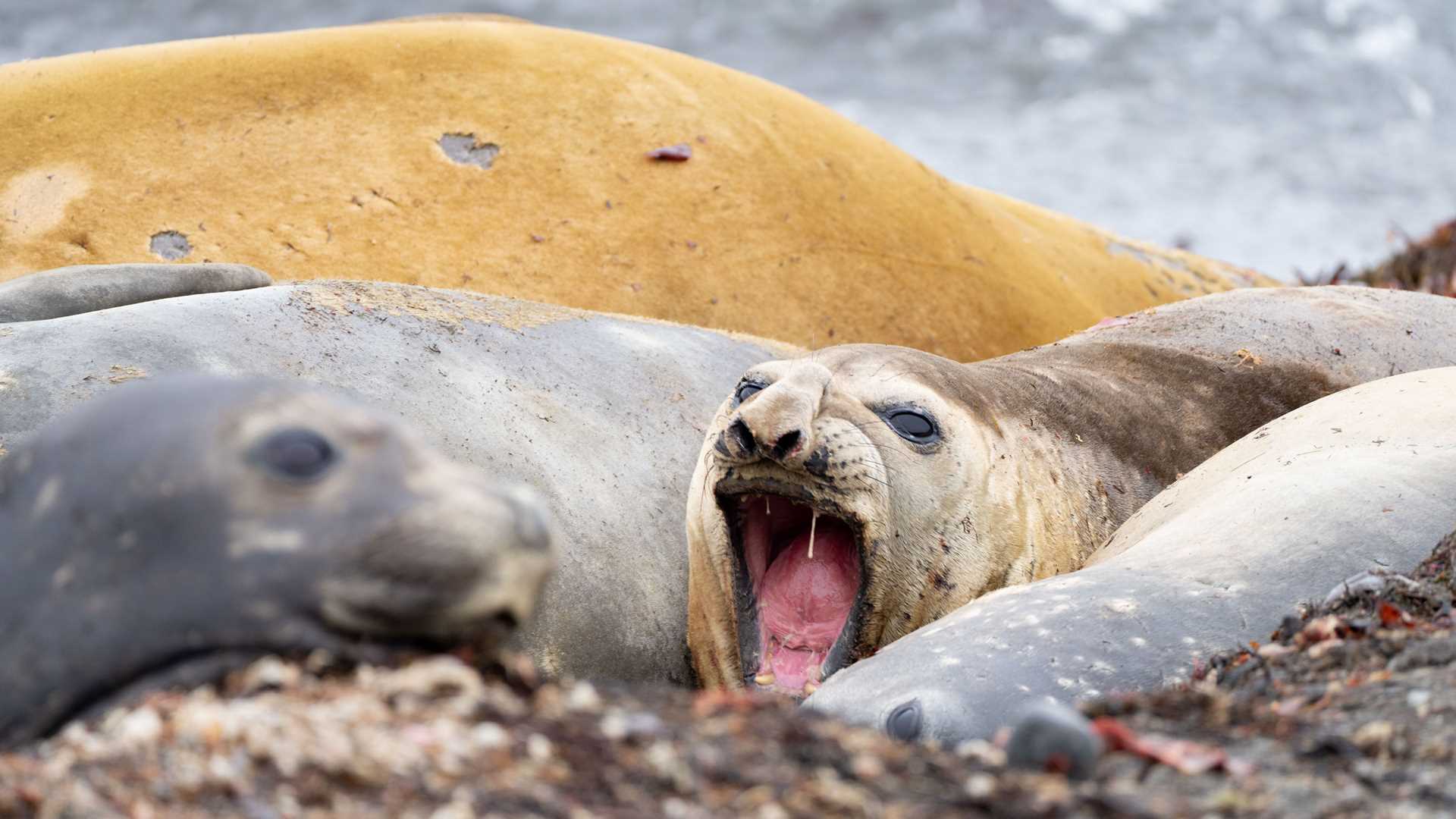No more ice for us today! We left mainland Antarctica and made our way to the South Shetland Islands where wildlife and history awaited us. Our first stop was Snowy Island, full of ellies (aka southern elephant seals) and their pups, lichen and grasses, and the nesting sites of southern giant petrels. After enjoying the antics of the ellies, we made our way to Deception Island where we sailed into the heart of the caldera of an active volcano. Steam rose from the beach, enshrouding the remains of a whaling station in an aura of solemn mystery.
2/20/2024
Read
National Geographic Resolution
Cape Horn and Beagle Channel
The huge distances we have covered on this journey meant that our last full day was spent almost completely at sea on our return leg from Antarctica. After a merciful lie-in, we crowded the decks as we sailed past Cape Horn, the majestic headland at the bottom tip of Hornos Island, the southernmost point of Tierra del Fuego and the entire South American continent. Despite its fearsome reputation, pleasant seas allowed for an enjoyable brunch before we plunged into our presentation schedule for the morning and afternoon. Naturalist Gail Ashton related her experience of living on the Antarctica continent for 18 months, Jonny Reid discussed marine mammal acoustics and the underwater soundscapes of this region, and Jess Farrer explained how the study of whale and seal poop can tell us so much about these animals. As we entered the Beagle Channel, the stunning mountains of Tierra del Fuego lined our passage to Ushuaia. Gathering in the Ice Lounge for the captain’s farewell party, we toasted a hugely enjoyable trip and the new friends we have made.







